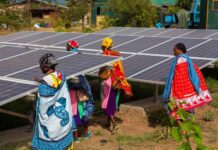
Small businesses at the regional and district levels are expected to benefit from a GH?38m facility to be advanced by the Microfinance and Small Loans Centre (MASLOC) this year.
This is aimed at enabling prospective beneficiaries to shore-up their businesses as part of the Centre’s programme of activities for the New Year.
This was contained in the Parliamentary Finance Committee report on the 2018 Programme Based Budget Estimates of the Office of Government Machinery.
“It will also approve and disburse a total amount of GHS19,181,000 to 3,036 SME applicants; and it will also disburse as a loan an amount of GHS5,045,000 to twenty Micro Finance Institutions.
“A total amount of GHS38,950,000 microfinance loans will be disbursed to beneficiaries at the regional and district levels.”
As part of capacity building, the Centre will hold a training programme targetted at youth and women to train them in shoemaking and shea butter,” the report noted.
The objective of MASLOC is to provide, manage and regulate on fiduciary basis approved funds for microfinance and small-scale credit schemes and programmes, and also serve as the apex body of the microfinance sub-sector.
MASLOC was launched by former President John Agyekum Kufuor to provide direct cash transfers and other business needs to poor households in Ghana which might not be in a position to support themselves.
The cash and other support given to these households are to help facilitate the setting-up of small businesses and expand already existing ones to enhance job- and wealth-creation.
With a vision to grow and develop small and micro businesses through the provision of sustainable microfinance, small loans and business services to Ghanaian entrepreneurs, the Centre is yet to fully reach its target.
Research published in the Journal of Economics and Sustainable Development indicates that the business advisory services offered by MASLOC to beneficiaries were identified to have improved the enterprises’ [micro and small-scale enterprises’ (MSEs] customer relations and attractions. All these have culminated into increases in earnings averaging 46.9%.
Despite its potential to help reduce poverty, the Centre’s sustainability is under serious threat due to the high rate of default by beneficiaries.
“The sustainability of MASLOC is however constrained by the high rate of default. The default rates for individual loans and group loans were 20% and 25% respectively. Overdue payments were estimated at 20% and 30% for individual loans and groups loans respectively.
The study concludes that MASLOC should intensively monitor the MSEs in order to address misapplications of the loans they take, which will in turn reduce the rate of loan default. – CLASS
























